It is hard to believe that I was on my first maths conference on this day exactly one year ago. Before that I had never been to a maths CPD event in my life. In just one year I have now been to five La Salle events, #mathsconf15 being my third maths conference.
Friday night – “Take life’s experiences when they come to you”
The timing for #mathsconf15 was perfect. I had just finished a very busy tutoring season of teaching that week and this was a good time to reflect and refresh. I went to Manchester early on the Friday and met up with Daniel of Peak Tuition (@PeakTuition) for lunch. We had connected on video calls and on twitter but this was the first time we were to meet in person. After lunch I met up with fellow tutor Austin (@Lazyrunner78). We roamed around Manchester central and found Alan Turing’s statue surrounded by flowers. It was his birthday on conference day and this set the mood perfectly for the next day.
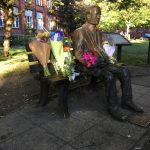
Alan Turnin’s statue in central Manchester.
We eventually got to the pre-conference drinks which were again absolutely brilliant. I met speakers and various teachers in a relaxed informal environment. Conference day itself is a fast roller coaster, so this was the perfect way to ease into it and meet others beforehand. The clock struck midnight and drinks had us all a bit hazy and happy. The war cry rang out from Mr Mattock and Mr Smith. “We are in Manchester, you only get a few chances in life like these so let’s explore the famous city nightlife”. Only a little arm twisting was required to convince us and so we went club hopping in Canal Lane dancing away to cheesy music. Though sensibly we stopped after a couple of clubs and went off to get a bit of sleep.
#mathsisbeautiful
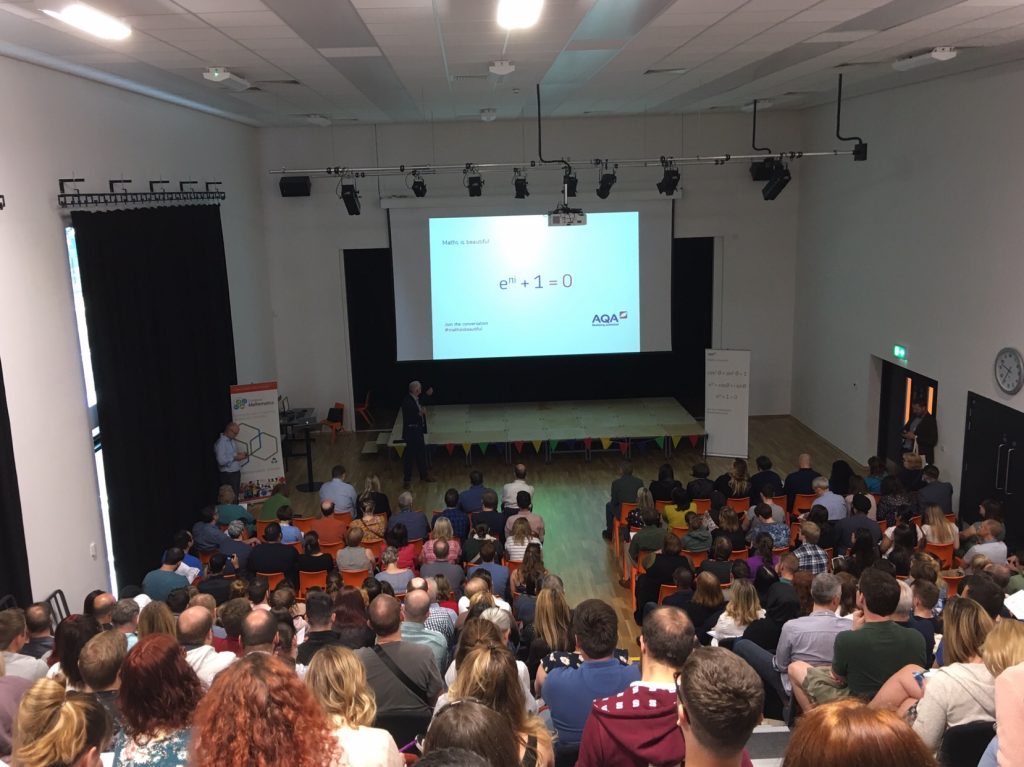
Maths is beautiful intro by Andrew Taylor of AQA
So what was the actual day like? The opening talk by Andrew Taylor of AQA introduced the hashtag #mathsisbeautiful What a great idea! Using images and music I personally want to show the links between maths, science and art. It is easy for most to see the beauty in the arts but with maths that art is hidden and implicit. So I hope to bring my take on this with that hashtag.
Simon Singh’s satanic hell and Simpson-e stuff
Pop and rock music culture has references to cryptic messages by artists when their songs are played backwards. From the Beatles to the Eagles with Hotel California and plenty of others. Simon Singh’s talk showed how this works for Led Zeppelin’s Stairway to Heaven. Amazingly once we were told the lyrics backwards the mind had a curios way of getting meaning out of noise in a way that was really a surprise.
As Simon went through more of his stories and books, there was also mention of the term ‘Spherical bastards’ used by Swiss astronomer Fritz Zwicky as a term of insult to other astronomers in his field who he did not get along with. Someone who is a bastard no matter which way you look at them from. Zwicky was sure a grumpy one.
Simon showed a short video of Andrew Wile’s story on cracking Fermat’s last theorem. Maths can bring people to tears (the good type) and it is a passion we can all relate to. We’ve all missed meals as we were too busy solving maths problems. Andrew Wiles missed many and the moment he breaks down in tears to describe his journey was really authentic and touching.
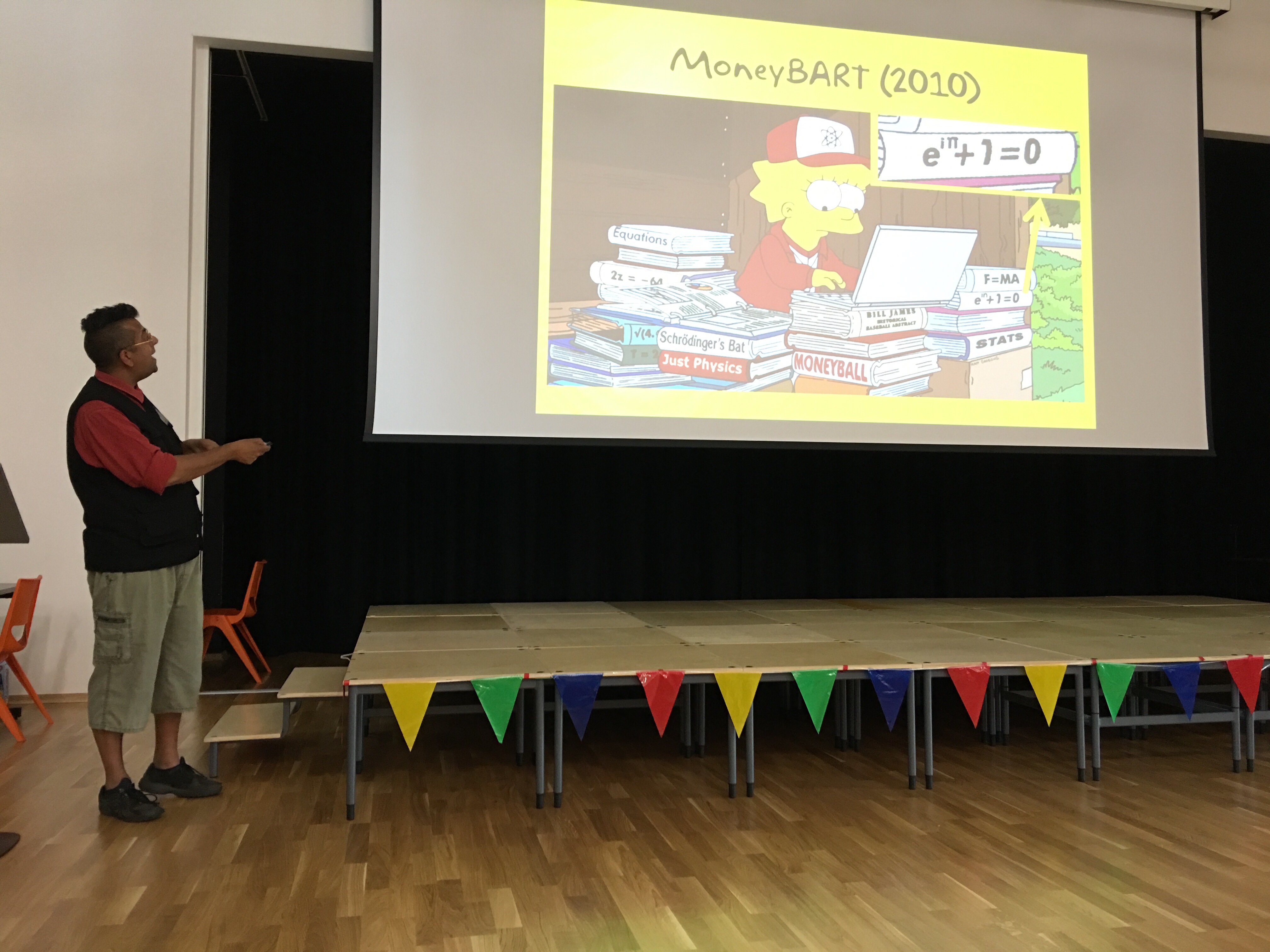
Euler and Lisa Simpson.
Simon Singh then moved to The Simpsons as well amongst some of the projects he is working on to help maths students. I know a lot of maths tutor friends who want to volunteer at schools. Simon has the perfect opportunity for that in his Top Top Set maths project that I would recommend you check out.
This is the second time I heard Simon talk. Simon is a superb and highly engaging speaker. La Salle put the guest speaker talk in the middle of the day rather than at the start of the day. This helped break up the day a lot better I think.
So what were the workshops I chose like? There were several workshops happening on the day but since many of them ran in parallel we were limited to 4 workshops. Tough choices had to be made and these are the ones I chose.
Workshop 1 : Indices and the importance of SLOP (Shed loads of practice)
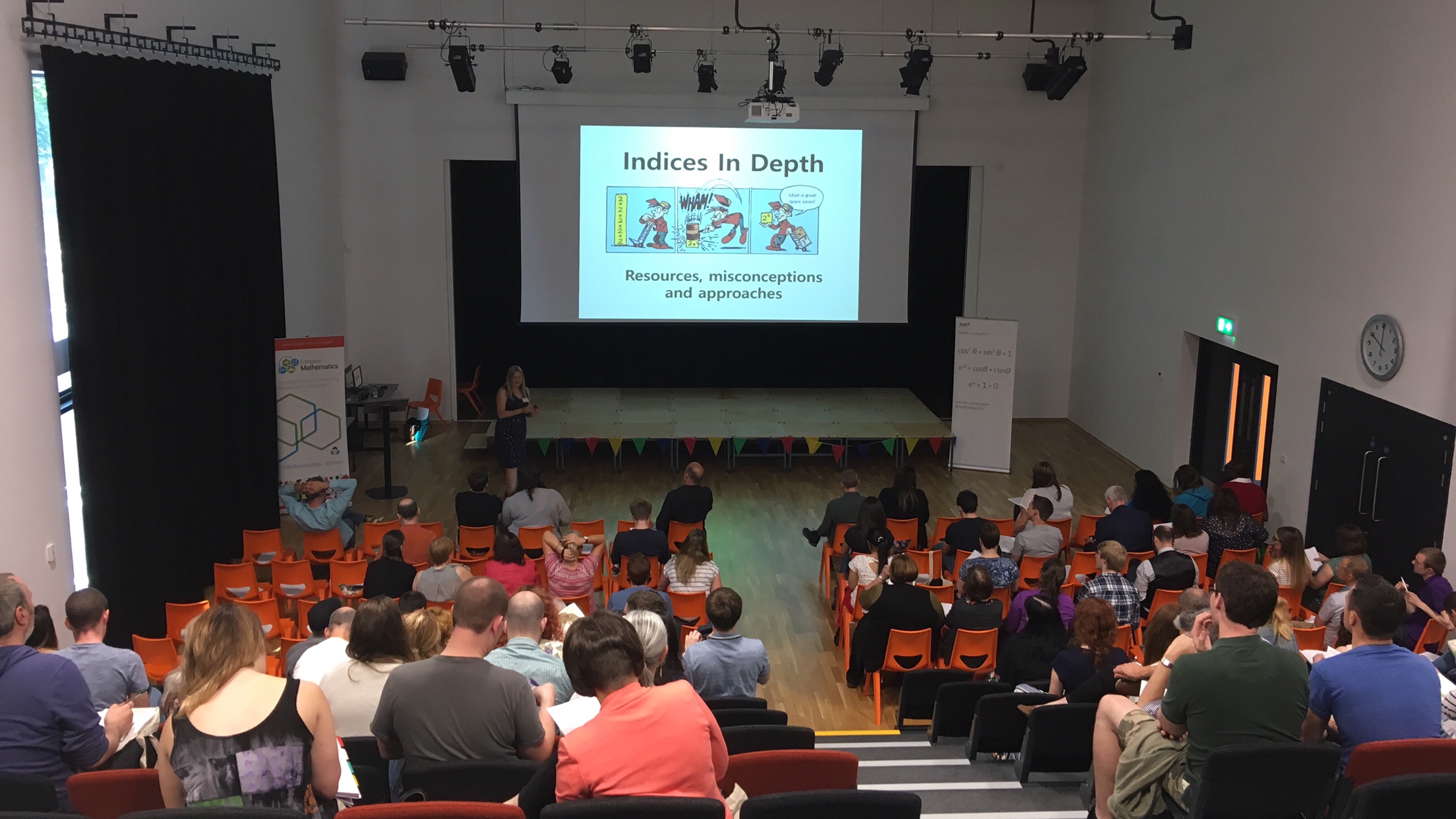
Indices in Depth workshop in the main hall
This was the first time I heard Jo Morgan (@mathsjem) talk. She’s an excellent presenter and had a lot of invaluable things to share on indices. Megan (@MeganGuinan1) covered her talk very well in a series of tweets, so that is also one place to go for a summary and key slides. Jo was very thorough with her research. She covered the importance of the topic comprehensively from the correct use of language, history of teaching indices, SLOP, examples of indices that would easily be suitable for GCSE students and a whole load of other indices goodies.
What I took away is that one must really sit with the indices topic for a while, until the language, process and meaning of indices makes clear sense to students. Through, conscious, deliberate practice. Rather than a one hour lesson, indices need more like 10 hours worth of lessons throughout the many years students have to get this one right. This could not be more true since I am finding that most of my A Level students get flummoxed when indices are inversed with Log operations.
It was also a relief for me that Jo confirmed what I thought all the time. Why don’t modern books have tons and tons of practice questions? 10 questions on one part of indices is not enough! I studied in the Indian system until the age of 15 and doing absolutely tons of questions per topic was the norm for me. It turned out that this was also done during the Victorian era in the UK as well. Jo called this simple idea SLOP – Shed loads of practice. Love that term.
There’s no way out of SLOP. SLOP is also needed in music practice, me and my ex-bandmate had a saying “Most of what happens in a band is so not rock ‘n roll”. What we meant was what every performing musician knows. At the start of learning a new cover (or original) song seemingly hours of mind-numbing practice have to be put in. We break down a song so meticulously into all its parts and slow the tempo down. At first this process kills the entire romance of the song. But once all the parts are nailed and put together a few times, at various tempos, the magic comes back to the song many folds. And that’s why maths feels so beautiful to mathematicians. The magic in maths happens after due diligence and practice has been given to it first.

Conscious, deliberate practice of indices when students first introduced to it
There was a lot in Jo’s talk and to cover it all would take a more comprehensive blog post of its own. Her workshop was confirmation of some of the things I already do and it also gave me loads of brand new things to think about.
Workshop 2 : EdTech tools and making maths digital
This talk and interactive presentation was given by Patrick McGrath (@TH_PatrickM) of Texthelp. There is no getting away from it. I am a tech geek and this was tech talk heaven for me. When choosing my workshops I restrained myself to attend just two presentations with an EdTech flavour. Patrick was clear from the outset that technology is only an aid to learning and ultimately teachers make the real learning happen. It was great to be reminded of this again.
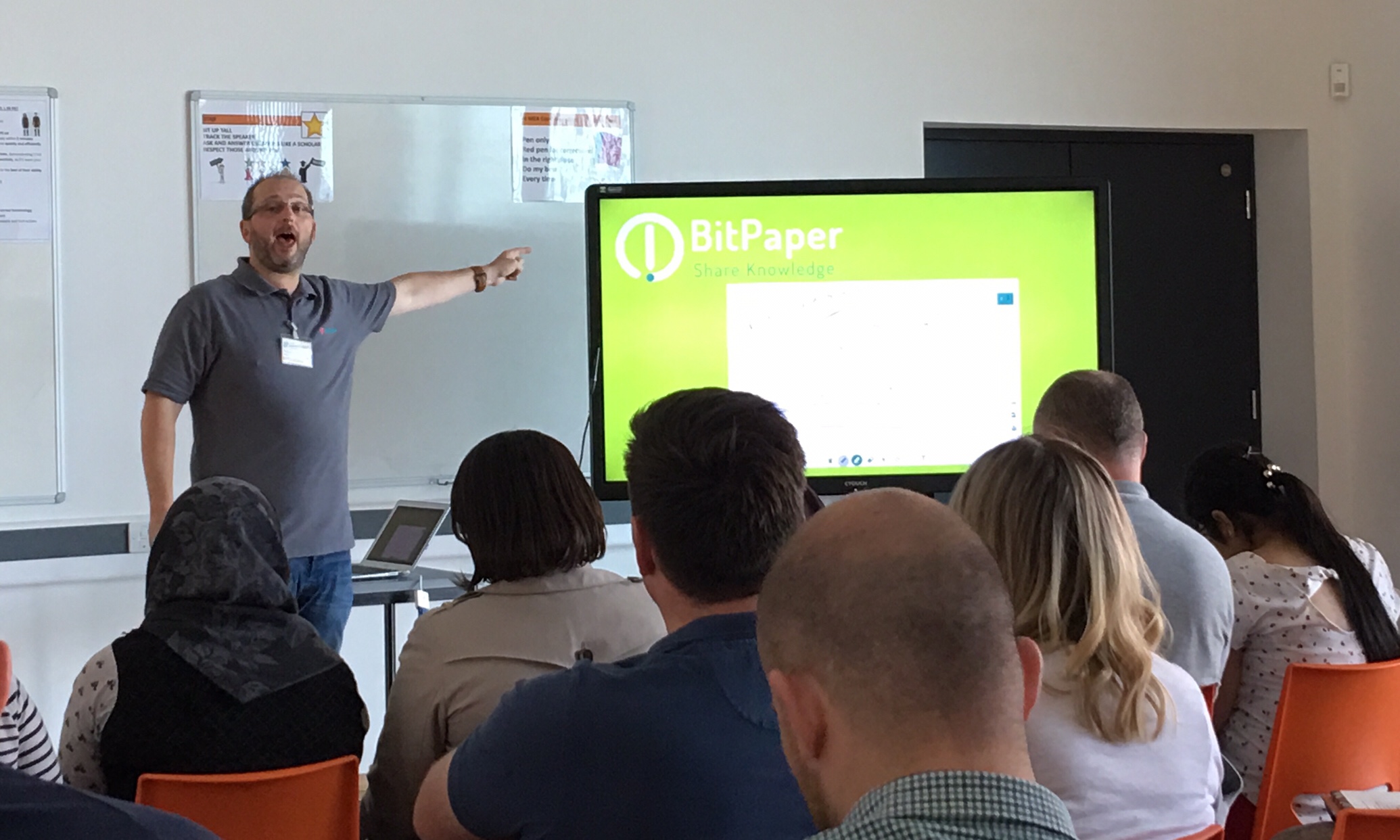
BitPaper as an EdTech collaborative tool
He started off the session with a pretty cool interactive where he could create a poll with 4 responses and delegates could answer with their mobile phones. As the data streamed in you could get a real time view of what everyone thought. This reminded me of the Plickers I saw at a Google EdTech conference.
There were a range of digital learning aids that Patrick went through. Too many to keep track of so I have a big list to explore. More digital toys to play with! What stuck in my head were a range of tools with interactive videos. Whiteboard type apps where students could answer questions without needing to talk, really good for quiet students. A way in which students could also record short audio and screencast snippets to show how they did the working out of questions.
With whiteboards talk there was one that was mentioned that put a mile long smile on my face. BitPaper is the tool I use all day for hours on end with my students. It was so cool to see it being shown on there. It has been an absolute game changer in my maths tutoring. It has bought colour and interactivity to my online lessons in ways I never thought were ever possible.
Many new things for me to explore after this talk which I am looking forward to.
Workshop 3 : Mind the Gap. Making Stats (even more) interesting
Statistics seems to have a terrible reputation both in popular culture (There’s lies, more lies etc) and even among maths educators. Richard Tock (@TickTockMaths) took the challenge on to make it more interesting to us. I must admit that beyond S1 I find Stats pretty tricky too. As mathematicians we love the sense of having an exact, definitive, irrefutable answer. Stats seems to take us into new fuzzy land.
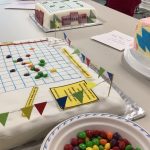
The winning maths cake
Florence Nightingale and her polar diagrams are an inspiration in the world of Stats. She bought clarity to how so much data can be crunched and presented in an elegant visual that can then be used to make real arguments based on data. Yet even I didn’t know about her commitment to Statistics until I saw the maths exhibition in London. There are no real modern Stats role models that I know of either except for the late Prof Hans Rosling. His visualisations blew me away when I first saw his talks on the BBC. And as someone who tutors both maths and Science, I really see that for Stats to have more meaning we must move it away from made up examples to real data.
One example is of normally distributed people living in a world of discrete sized t-shirts and never quite finding that perfect fit. It opens up a nice conversation on mass manufacturing methods vs tailor made clothes. Boltzmann first showed that gases have atoms shooting around at various speeds. With enough stats you can start making sense of it all and link the micro with the macro. Essentially the type of work I did in a software development team as an analyst helping build cost models of metal commodity prices. Both during my PhD and my job in commodities there was an enormous amount of data crunching, sorting and making sense of it all. So we can’t really escape Stats in the real world.
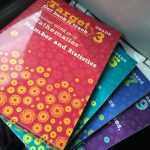
More winning. I won these books in a raffle!
Richard took us through a lot of the visualisations and examples that Prof Rosling used to have in his talks. I didn’t know you could download them from the gapminder site and have a play with them yourself. So this is something I will definitely explore.
Going back to visual stats displays, the other side of those displays are ones that are horribly inaccurate and completely misleading. Richard had plenty of examples of that from tabloids for example. He also went through the Large Data Set examples of various boards.
I am glad that I took a chance on this talk. Many of my friends work in data related jobs so I will prod them and get some ideas from them too.
Workshop 4 : Geogebra and the attack of the z axis dinasour
This workshop was given by Leona So (@lwyso). Choosing this one was a close call between choosing this one or the Desmos one. I am somewhat embarrassed to admit to all my techy tutor friends that I have never had a play with Geogebra. One reason for that is clear, it is not as intuitive as Desmos (for the simple stuff anyway). Geogebra is a complex tool with which you can do a phenomenal amount. I have used interactive tools made on it to explore circle theorems for example but have never actually made anything on it myself.
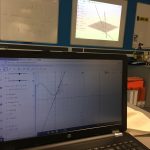
Surfing the curve with Geogebra
Leona took us through various examples live. Putting a gradient on a curve and surfing along the curve to see how the gradient changed. She extended that idea to show differentiation from first principles as well. Continuing with tangents, she showed how the derivative function can be plotted alongside the original function. Cubics lead to quadratics and quadratics lead to linear ones. All stuff that we know but to see it live gave new life to it. “Students like to see moving things” and that’s certainly true for me too.
To finish off the talk she got us all to wear 3D glasses and showed equations of lines and planes in 3D. It was like being at a 3D cinema. Instead of being attacked by dinosaurs I was being attacked by the z axis that seemed to be protruding out of the board and into the classroom. What a way to finish the last session of the last day! There was a lot to cover in the session and inevitably it was hard to replicate all the demos on our own computers at the same time. To do that would have taken a lot longer so I am glad there was a good snapshot of all the cool stuff compressed into a short workshop. Fluency in Geogebra will add a great tool to both my online A Level maths tutoring and for GCSE as well.
Now I have no excuse to explore Geogebra a lot more.
In Conclusion
I am in awe of some of the top teachers, resource makers and relentless hard workers who make these conferences happen. It gives me great hope that with such dedicated educators we do have control on how we deliver maths education in the UK and spread the knowledge of this beautiful subject.
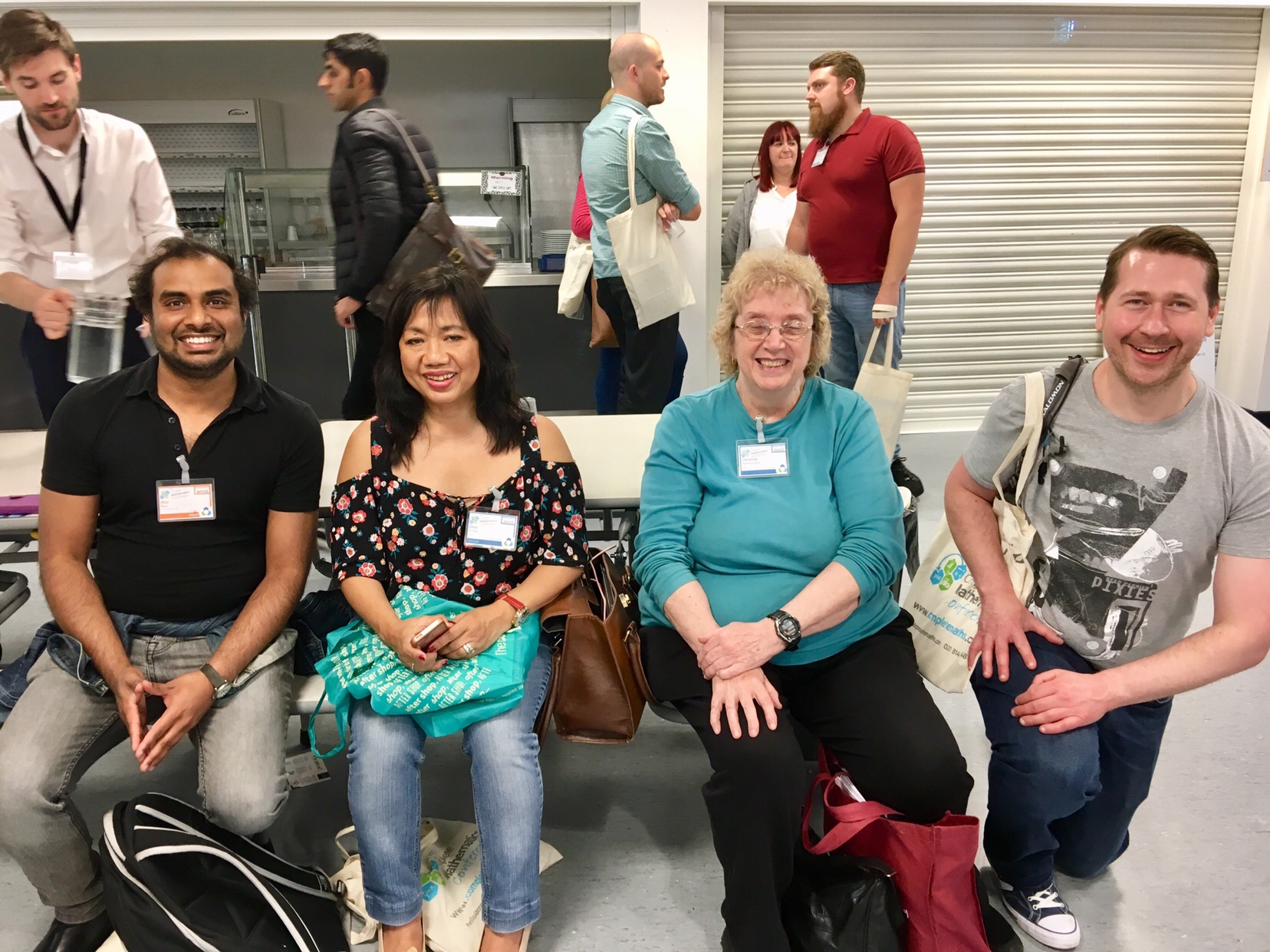
The awesome tutors of the Maths Tutors UK collective
Thanks to La Salle for putting on the whole show. This was easily my most favorite conference of the three I have been to so far. I am a member of CompleteMaths and for the CPD alone it is worth it for me. The conference is very affordable thanks to some sponsorship from AQA. I cannot recommend these conferences to teacher and tutor friends enough. Get yourself booked up to the next maths conferences, they have dates all over the UK for the next two years. To echo what a wise man once said “Take life’s experiences when they come to you”.